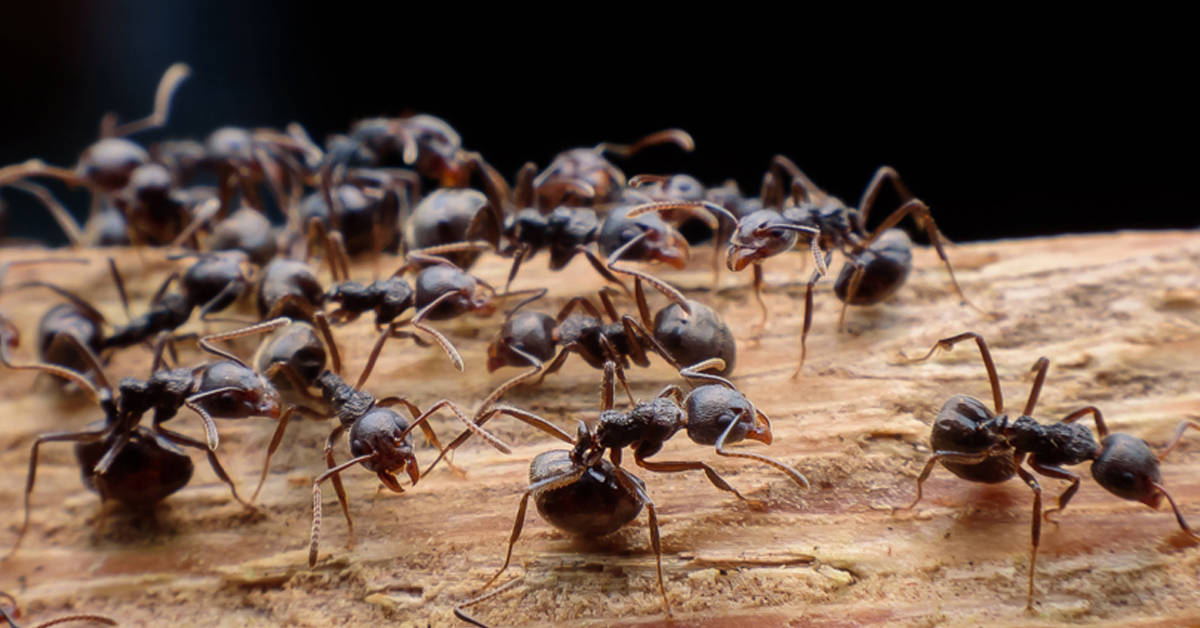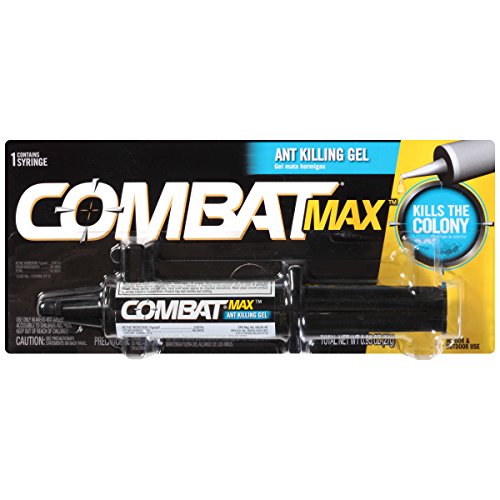What can you do if an odorous house ant infestation appears on your property? How can you tell the difference between an odorous house ant and carpenter ant? These are all essential questions being asked by homeowners across the world who have suddenly encountered ants on their properties. Ants are a common problem but knowing which type you’re dealing with will help you get rid of odorous house ants and carpenter ants for good! Having a home infestation is the last thing any homeowner wants to deal with. These insects may not be as annoying and destructive to your furniture and walls, but they do cause unwanted guests and issues on your property. Odorous house ants and carpenter ants are two of the most common that homeowners commonly deal with. This guide is to help you identify the differences between the two, as well as provide tips on how to eradicate them using proven methods.
Odorous House Ants Vs Carpenter Ants
Introduction
Odorous house ants and carpenter ants are two of the most common types of ants found in United States homes. Both carpenter ants and odorous house ants can be difficult to control, so it is important to identify them correctly.
What are odorous house ants?
The odorous house ant, Lasius neoniger, is a small, dark brown ant that has a strong scent. It is often confused with other types of ants such as the carpenter ant and the cornfield ant. The odorous house ant is common in the southern and western United States. These ants are usually found indoors but can also be found outdoors where there are litter piles or mulch to live on.
What do carpenter ants look like?
The carpenter ant is usually a dark brown color with a black head, thorax and abdomen. It has two antennae that are longer than its body. The legs of the carpenter ant are long and slender with little hairs on them (setae). Carpenter ants have three smaller eyes located between their larger eyes.
The behavior of carpenter ants can vary depending on whether they are inside or outside their nest. They will be calm when they are inside the nest but become more active when they must go outside to find food or water for their colony. When you see them moving around in your home it means there may be a problem with your home such as termites or moisture build-up which attracts these pests to come into contact with humans!
Carpenter Ants eat many different types of foods including: dead insects, tree sap/resin (including coniferous trees), other insects that live in wood such as termites, beeswax from honeycombs/comb building species such as Apis mellifera (honeybees), nectar from flowers & fruits along with other materials from plants that contain high levels of starch fat proteins complex carbohydrates like those found in seeds nuts leaves etc..
What do odorous house ants look like?
Odorous house ants are small and black, about 1/8 inch long. They have a single node between thorax and abdomen (the joining point) instead of two nodes. Their antennae have three segments, and they do not have an enlarged sting or stinger at the end of the abdomen like carpenter ants do.
Odorous house ants do not eat wood or food sources like sugar, fruit juices or grease as carpenter ants commonly do. They also don’t reproduce as quickly as carpenter ants, so you will not see masses of them swarming around your home looking for food or nesting sites like you might see with carpenter ants.
How did I get odorous house ants or carpenter ants?
The first thing to know about odorous house ants and carpenter ants is that they’re not actually the same species of ant. In fact, they’re different genera—which means they’re closely related enough to count as cousins, but not so close that you should think of them as siblings. Carpenter ants are notorious for getting into houses through holes in wooden structures like siding and decks, where they can nest underneath or inside your home.*
Odorous house ants are more likely to be found in kitchens than anywhere else in a home; their small size makes it easy for them to get around undetected and make their way into cabinets or pantries.*
Odorous House Ant Prevention Tips
If you find yourself dealing with odorous house ants, it’s best to take preventative measures. The following tips will help you keep your home ant-free:
- Seal food in airtight containers. There is no reason for any food to be left out, especially if it gives off a sweet scent.
- Don’t leave food crumbs on your countertop or sink drain—anything that may attract ants needs to be cleaned up immediately.
- Don’t leave food in trash cans overnight; make sure they’re emptied before bedtime and left outside until morning if possible (most garbage men don’t work at night).
- Don’t leave garbage bags open or overfilled; this allows the ants access into the house through any small gap around the bag’s opening.
- Store all food items inside cupboards rather than on shelves or pantry tops—a clean kitchen will also help deter odorous house ants from entering your home!
Carpenter Ant Prevention Tips
Keeping your home free of carpenter ants involves keeping the kitchen free of food and water. Because carpenter ants are attracted to food, it is important to keep food in a sealed container or covered when not being eaten. This includes pet food and any other foods that may attract insects.
Also, keep the area around your sinks clean by wiping up any spills immediately and cleaning drain traps with vinegar every few months to prevent mold growth that could attract carpenter ants. If you notice an increase in moisture around your home (creaky floors, puddles on the floor), it may be due to a leaky pipe or roof; call a plumber immediately if this is the case.
Carpenter ants damage wood. Odorous house ants do not.
Carpenter ants have a large, dark head and a thin waist. Their abdomens are pale yellowish in color. They have long antennae that they use to feel their way around and are usually found outdoors.
The odorous house ant is a lot smaller than the carpenter ant, with an orange or reddish-brown abdomen and darker thorax (the part between the head and abdomen).
Conclusion
I hope this blog was helpful in determining the difference between odorous house ants and carpenter ants. If you need help with any pest that’s causing you trouble, don’t hesitate to get in touch with a local licensed pest professional. They’ll be able to get rid of your problem entirely so you can rest easy knowing your home is free from pests!
- Attracts & Kills – Kills common household ants including acrobat, crazy, ghost, little black, odorous house, pavement, and other sweet-eating ants
- Kills the Ants You See & the Ones You Don’t – As worker ants discover the bait, they share it with the rest of the colony to eliminate them all
- Works Fast – You should see a significant decrease in the number of ants visiting the bait stations within just a few days
- Ready to Use – Place the bait stations, watch it attract ants, and eliminate the entire colony
- Use Throughout Your Home – Place stations near areas where you’ve seen ant activity including along baseboards, in corners, on counters, and more
Additional Info :
| Item Dimensions | |
| Height | 4.5 Inches |
| Width | 6.6 Inches |
| Length | 1.2 Inches |
| Weight | 0.27 Pounds |
- Kills the ants you see and the ants you don’t
- Pre filled bait stations are ready to use
- Contains borax
- Flexible placement: in the ground using the stakes or on decks, or in garages or basements without using the stakes
- Patented station protects the bait from the elements, prevents it from drying out
Additional Info :
| Color | Clear |
| Item Dimensions | |
| Height | 8 Inches |
| Width | 5.18 Inches |
| Length | 5.18 Inches |
| Weight | 0.667 Pounds |
- Kills Carpenter ants, termites, carpenter bees, wood wasps, and other insects
- Kills on contact and continues killing for up to 1 month
- 2 way spray nozzle allows you to reach crevices where pests live
- Odorless and non staining formula
- Ideal for indoor or outdoor use
Additional Info :
| Color | Orange |
| Item Dimensions | |
| Height | 9.4 Inches |
| Width | 8 Inches |
| Length | 2.7 Inches |
| Weight | 1.2 Pounds |
- Target pests: For indoor and outdoor control of structure-invading ants including argentine ants, carpenter ants, and ghost ants and other nuisance ant pests; excluding fire, harvester and pharaoh ants.
- Highly attractive formula promotes ready transfer of the active ingredient throughout the colony
- Powerful, active ingredient knocks out workers, brood and queens
- Approved for use indoors and outdoors, applied in cracks and crevices. Active Ingredient: Thiamethoxam, .010%.
- How does Optigard Ant Bait Gel work? Ants that feed on the gel will return to their nest and transfer the bait to the queen and their young, thereby killing the queen, the young and the entire colony.
Additional Info :
| Color | White |
| Item Dimensions | |
| Height | 5.4 Inches |
| Width | 2 Inches |
| Length | 6.25 Inches |
| Weight | 1 Pounds |
- Easy to use
- Child resistant
- Leaves little to no mess
- Gel bait kills ants and the entire colony
- High water content encourages faster feeding, so it starts killing within hour
- Provides fast control of ants within 3 to 5 days
- Syringe applicator lets you place the gel in hard to reach areas where ants travel, such as cracks and crevices
- Ready-to-use directly from the syringe for fast, easy application
Additional Info :
| Color | .. |
| Item Dimensions | |
| Height | 7.1 Inches |
| Width | 4.6 Inches |
| Length | 1.4 Inches |
| Weight | 0.1 Pounds |
| Release Date | 2019-04-08T00:00:01Z |





